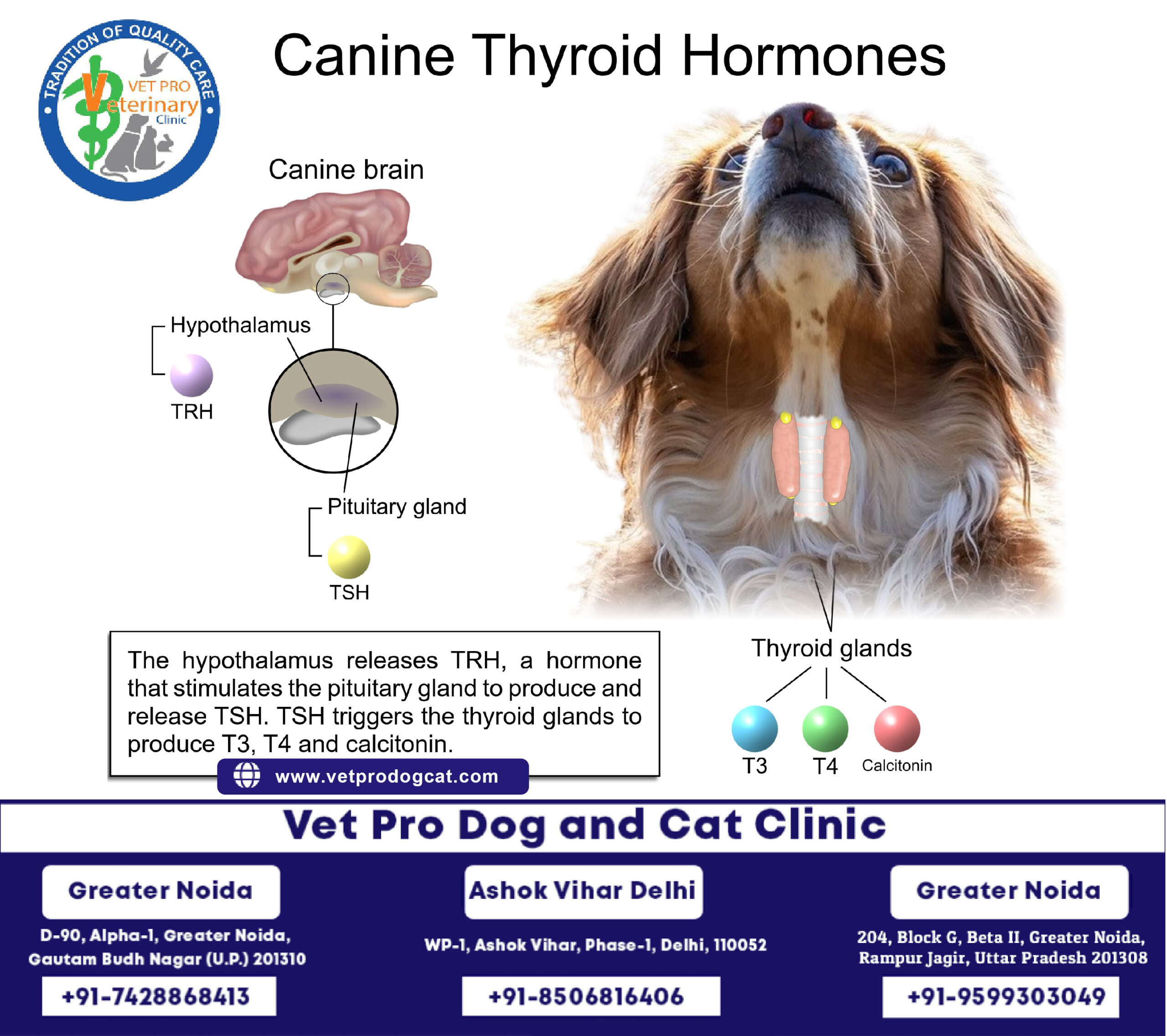In dogs, the thyroid gland produces two main hormones: thyroxine (T4) and triiodothyronine (T3). These hormones play critical roles in regulating the metabolism of the body and are essential for the proper functioning of various physiological processes. Here’s an overview of these hormones and their functions in canines:
- Thyroxine (T4):
- Thyroxine is the primary hormone produced by the thyroid gland.
- It is synthesized and released in response to stimulation by thyroid-stimulating hormone (TSH) from the pituitary gland.
- T4 plays a crucial role in regulating the body’s metabolism by influencing the rate at which cells utilize oxygen and produce energy.
- While T4 is produced in larger quantities than T3, it is less potent than T3. T4 serves as a precursor to T3 and is converted to T3 in various tissues of the body, including the liver and kidneys.
- Triiodothyronine (T3):
- Triiodothyronine is the biologically active form of thyroid hormone.
- It is produced in smaller quantities compared to T4 but is more potent.
- T3 plays a key role in regulating metabolic processes, including energy production, heat regulation, and protein synthesis.
- T3 exerts its effects on target tissues by binding to thyroid hormone receptors located in cells throughout the body.
The balance between T4 and T3 levels is crucial for maintaining overall health and proper metabolic function in dogs. Abnormalities in thyroid hormone levels, such as hypothyroidism (low thyroid function) or hyperthyroidism (excessive thyroid function), can lead to various health issues and clinical signs, as discussed in the previous response.
Diagnosing thyroid disorders in dogs typically involves measuring the levels of T4, T3, and thyroid-stimulating hormone (TSH) in the blood. Treatment for hypothyroidism usually involves supplementation with synthetic thyroid hormones, such as levothyroxine, to restore normal thyroid function and alleviate clinical signs.








